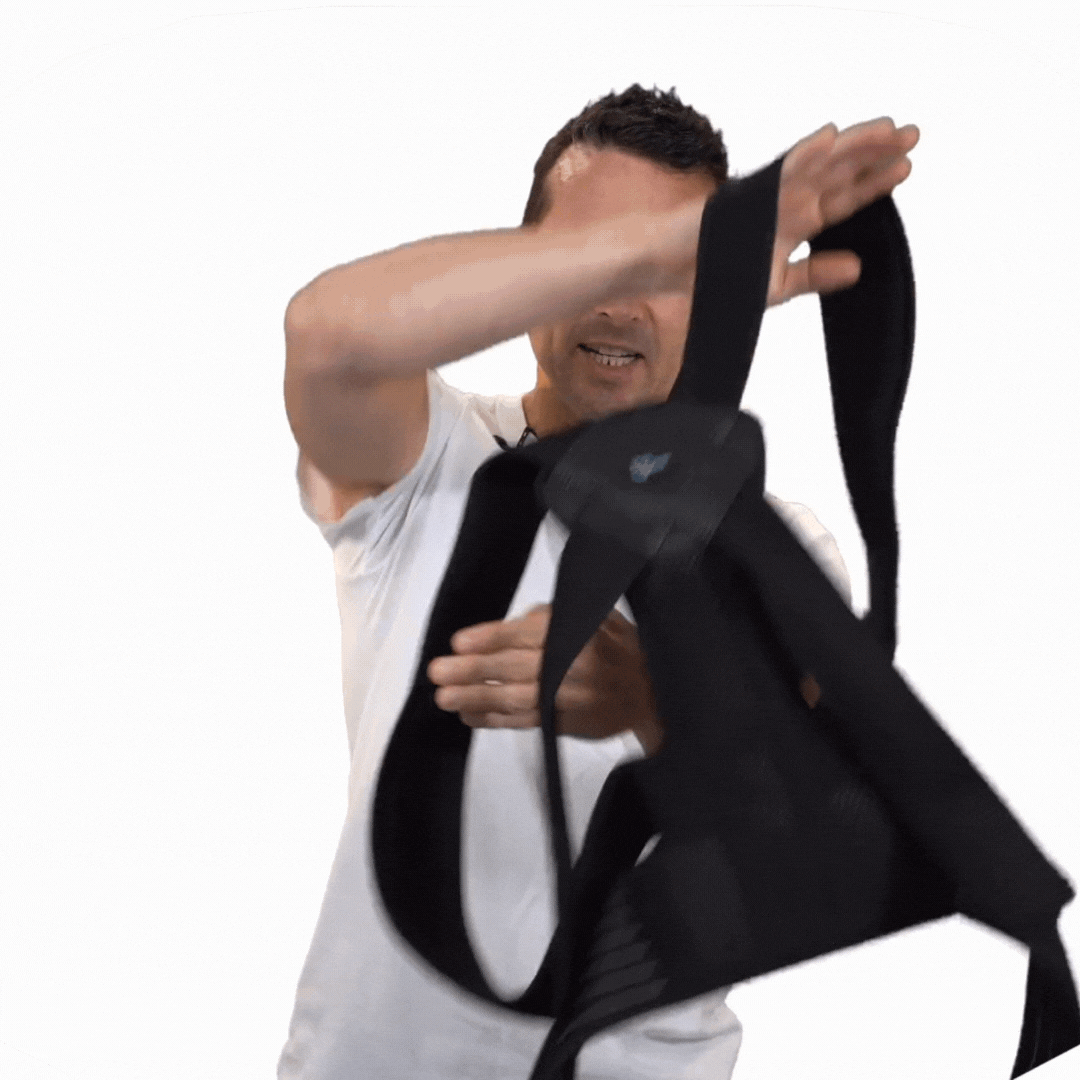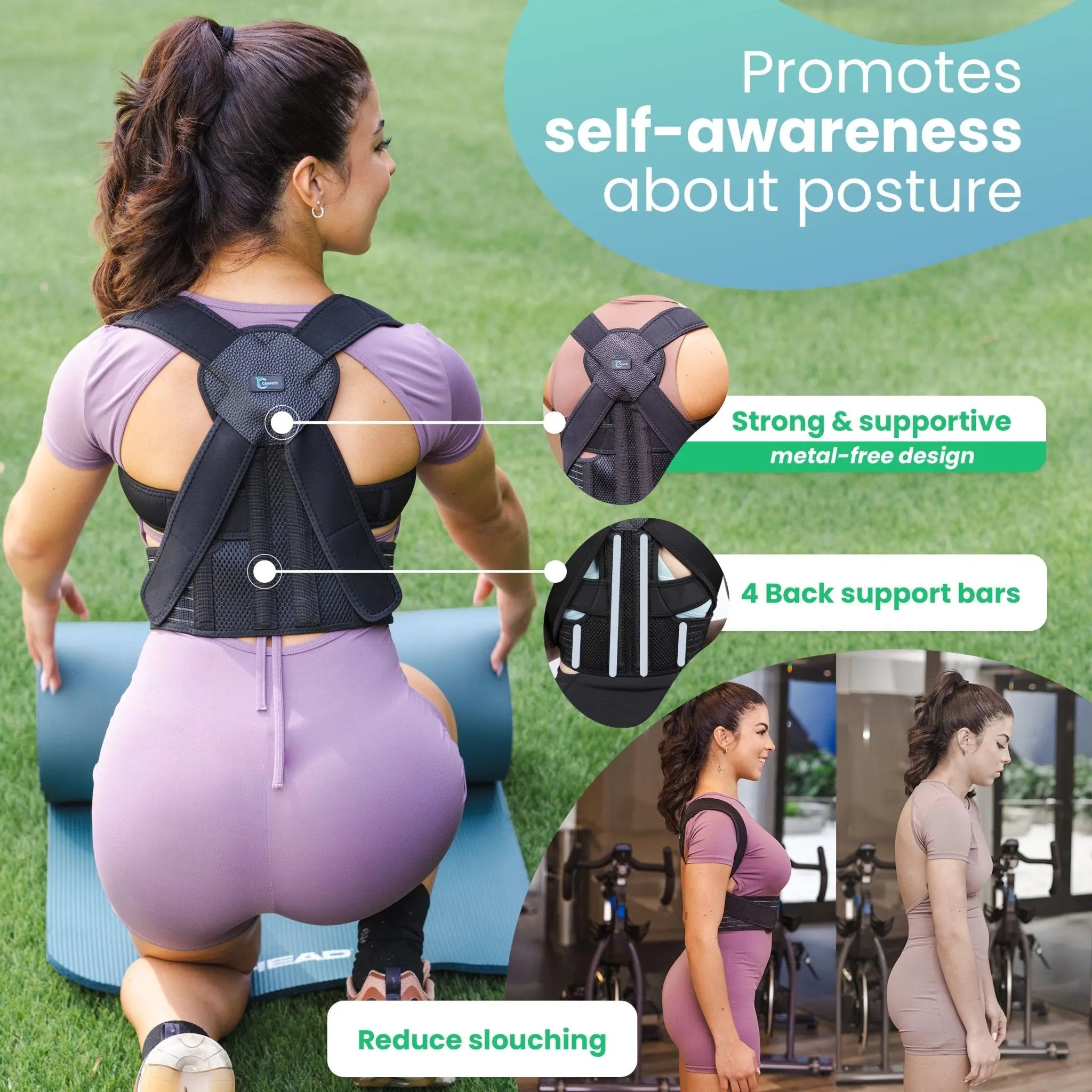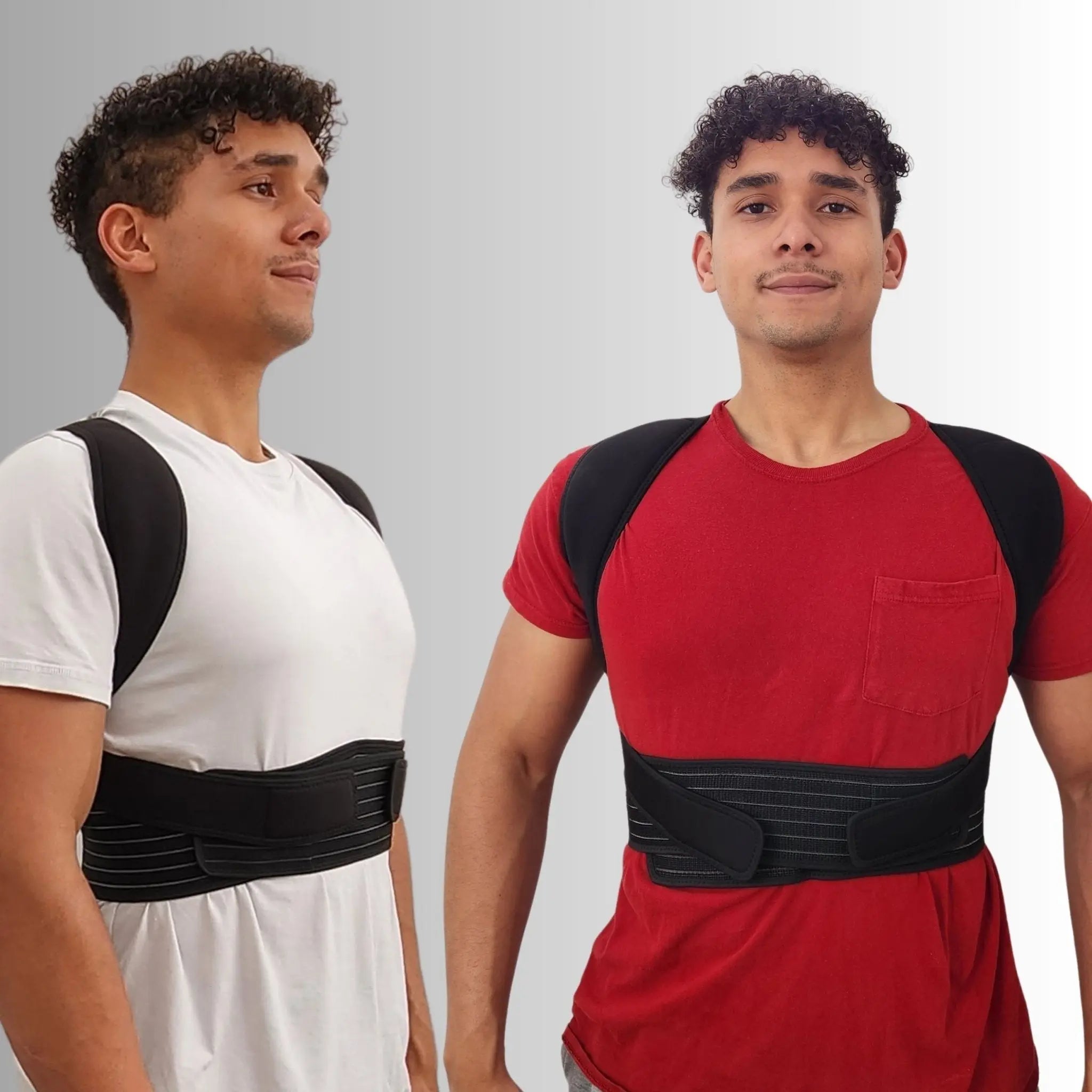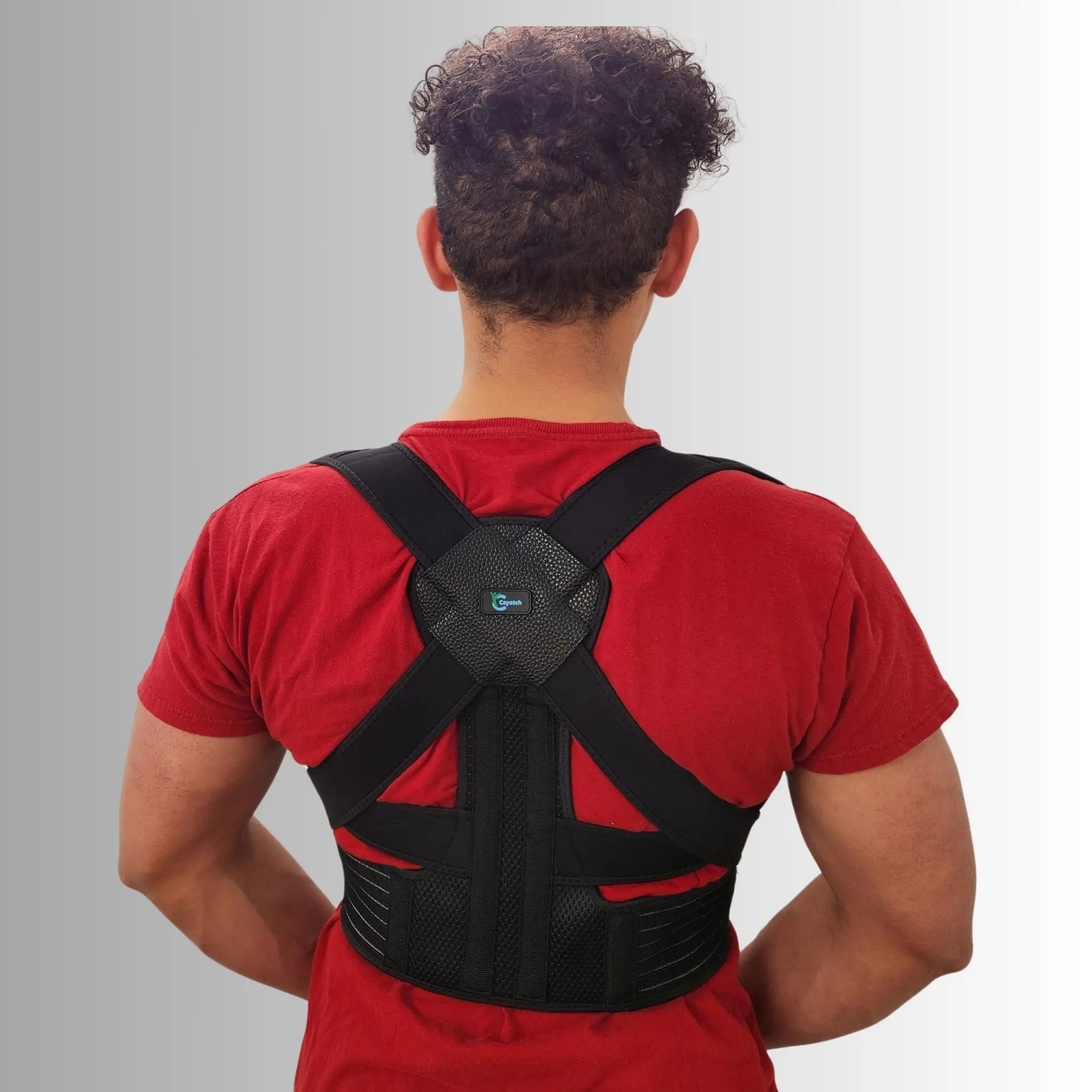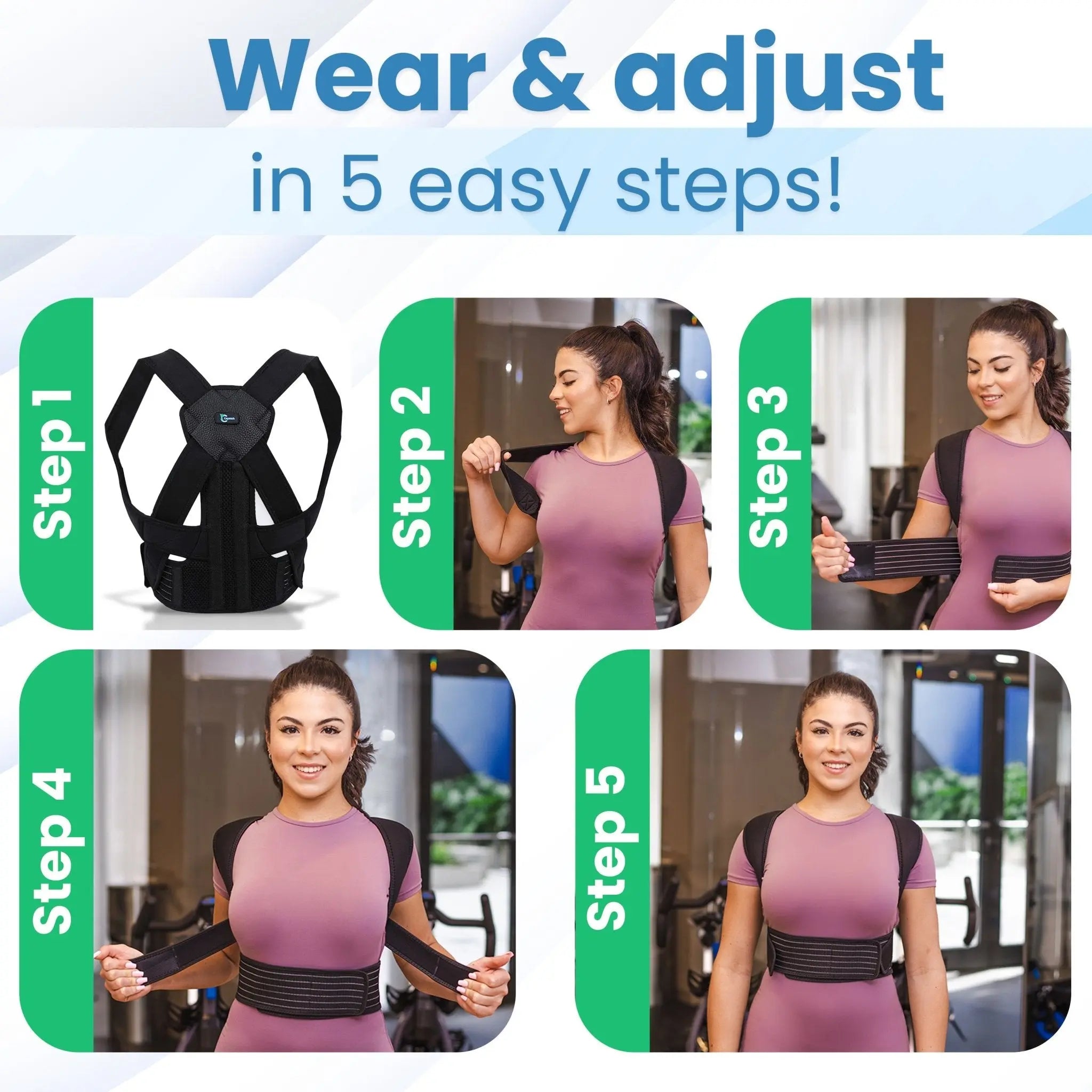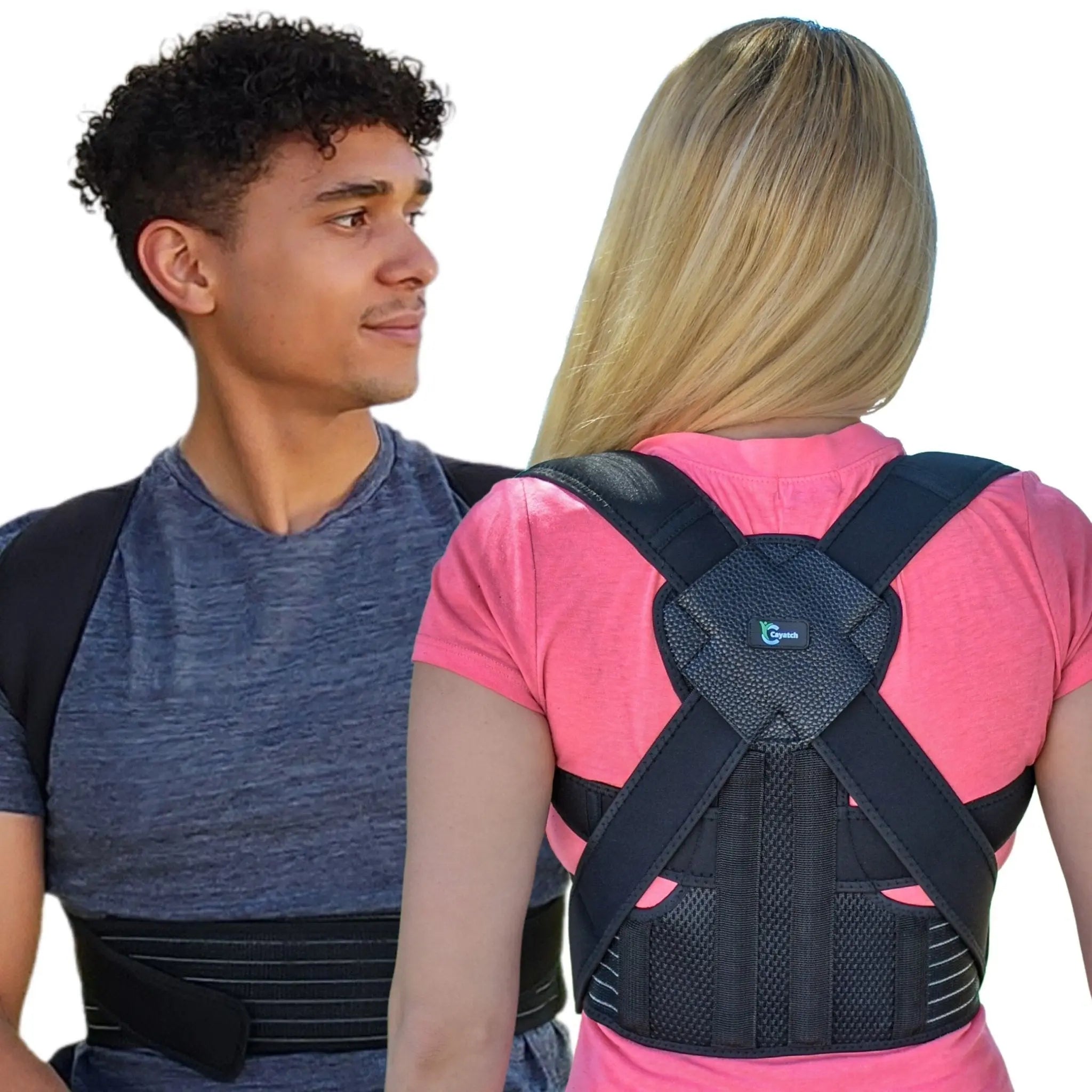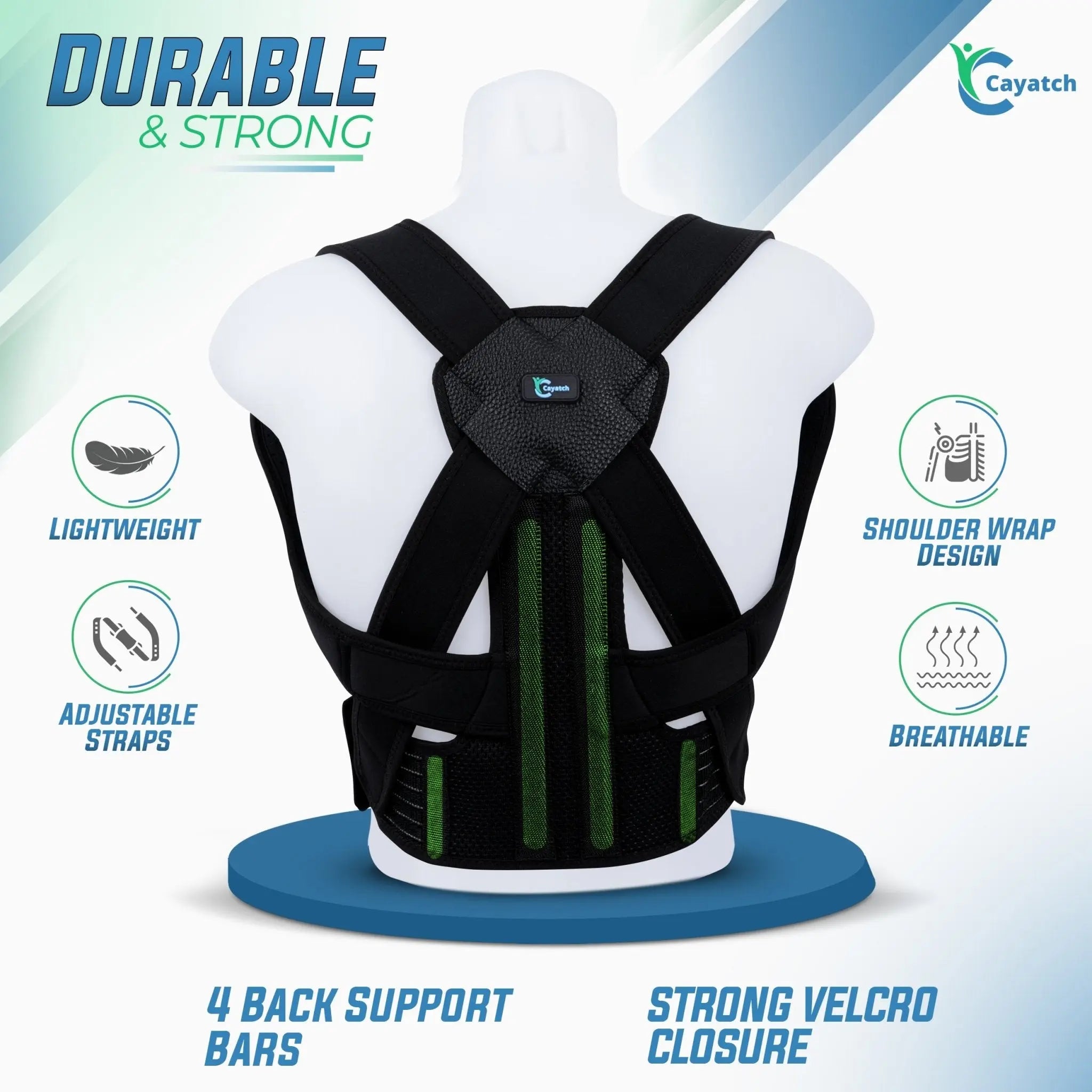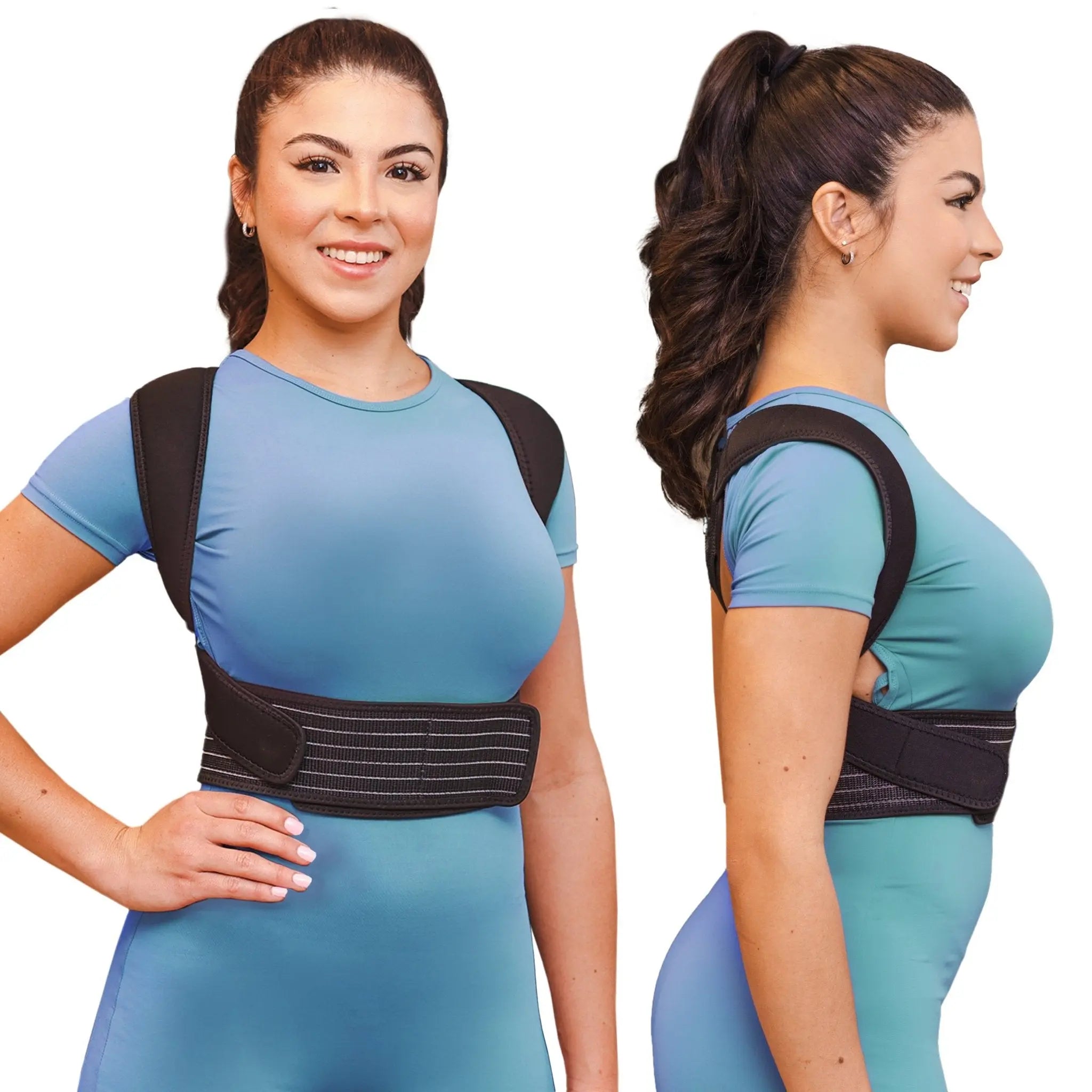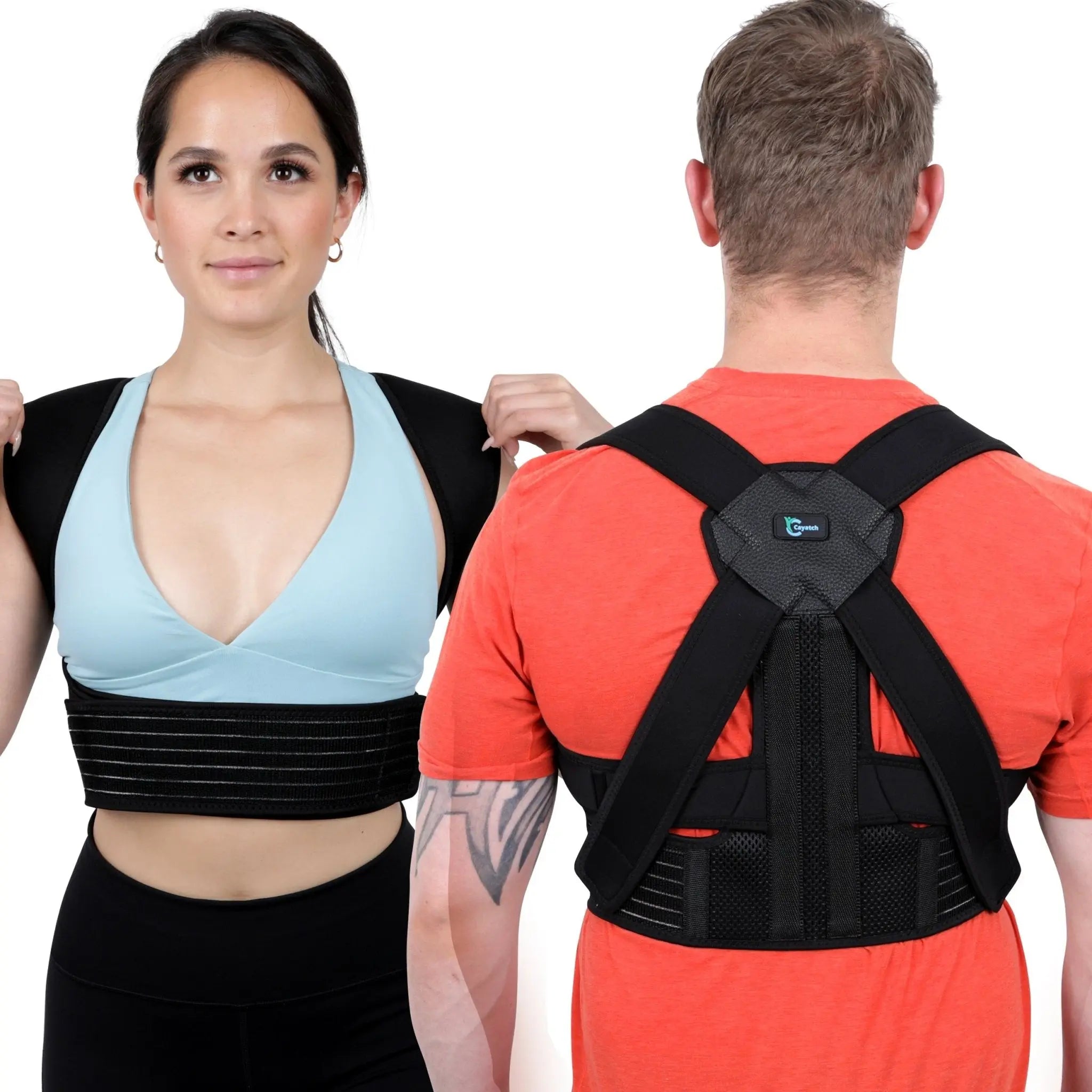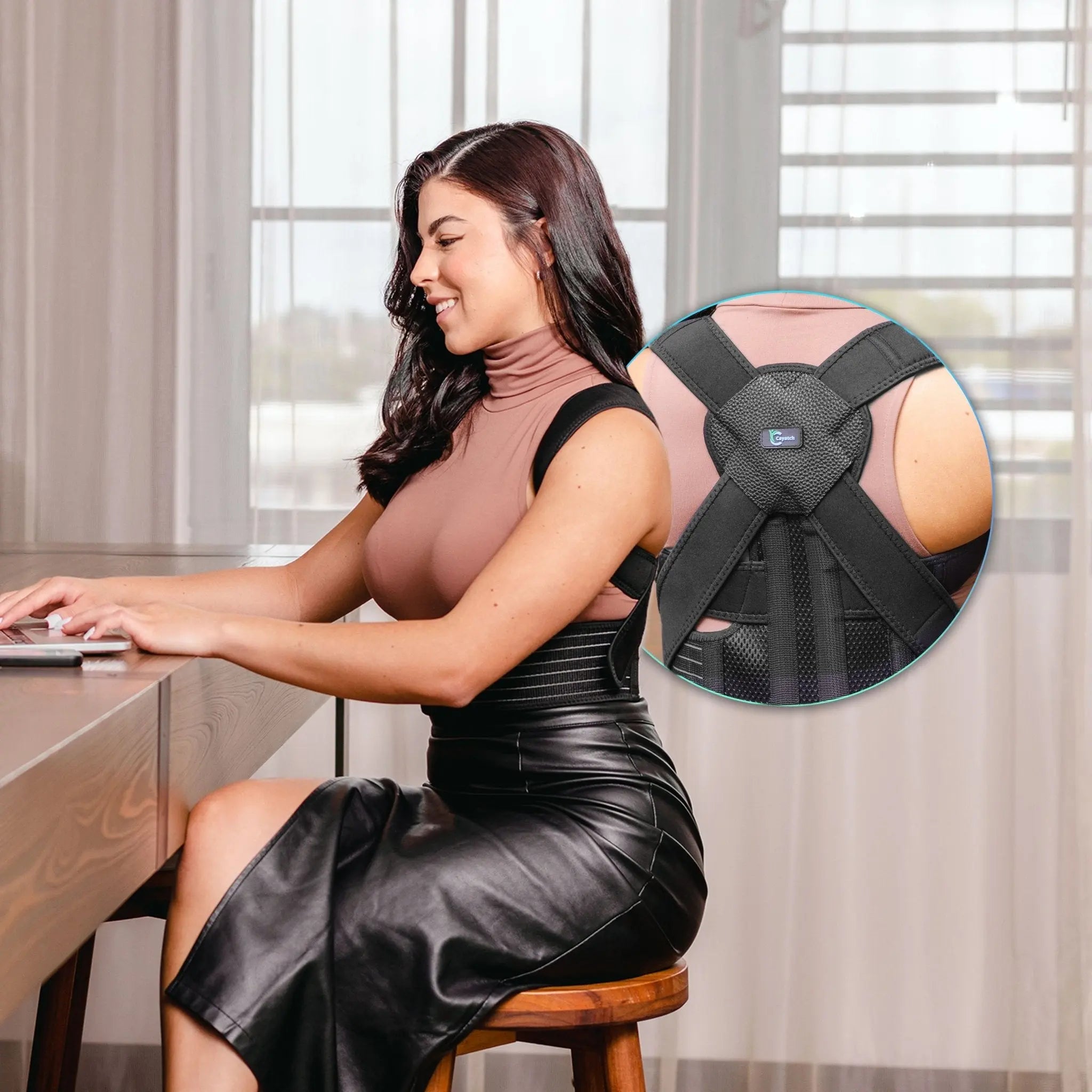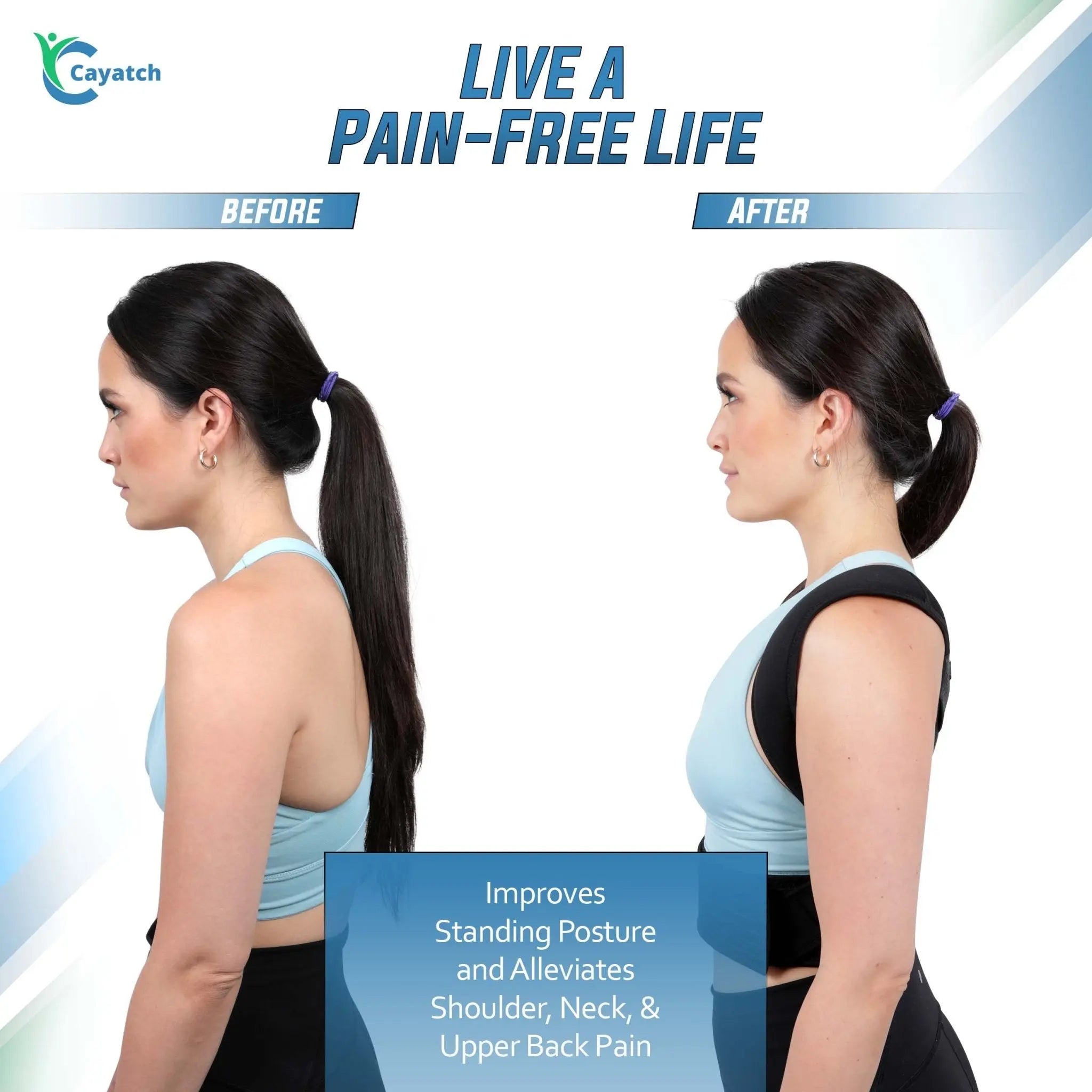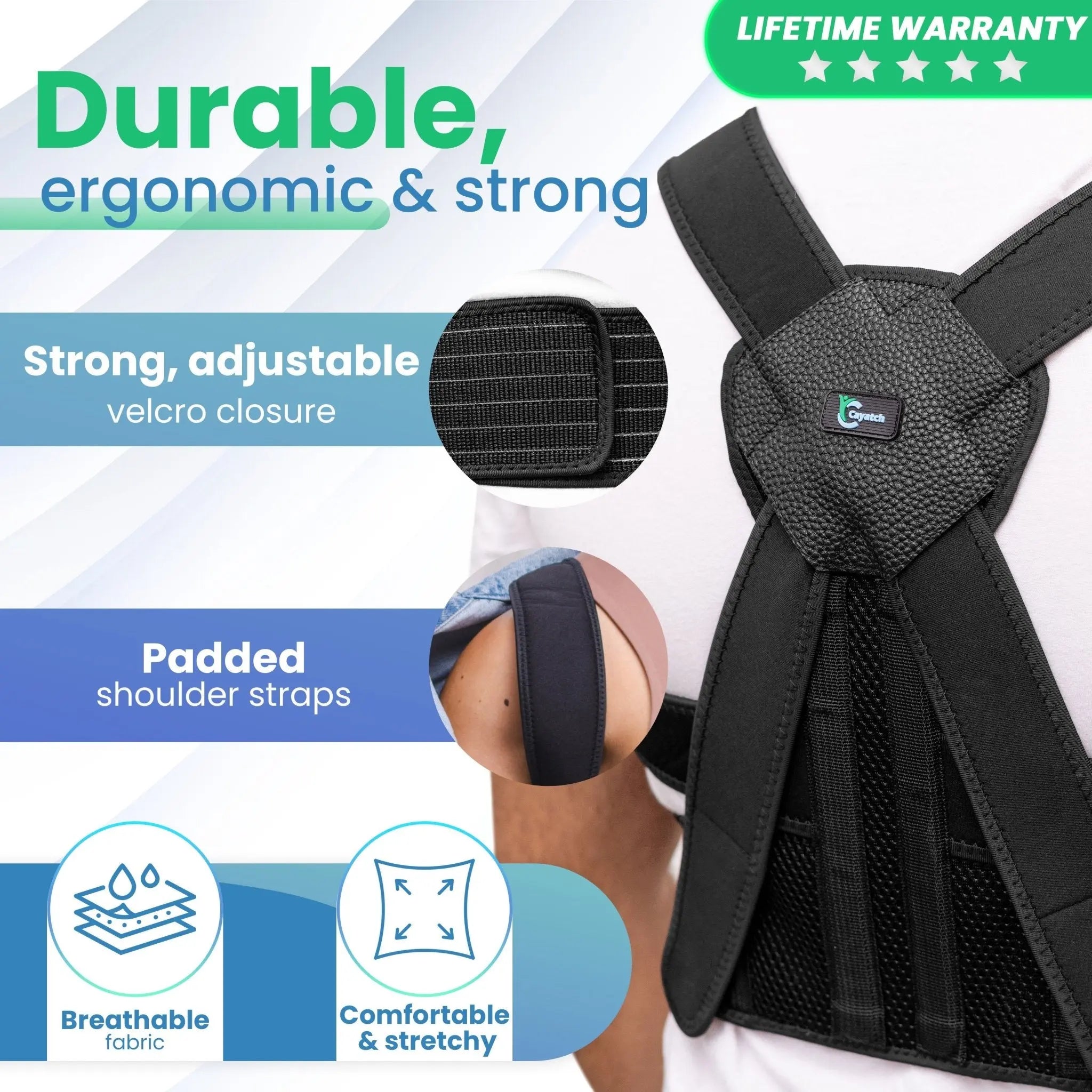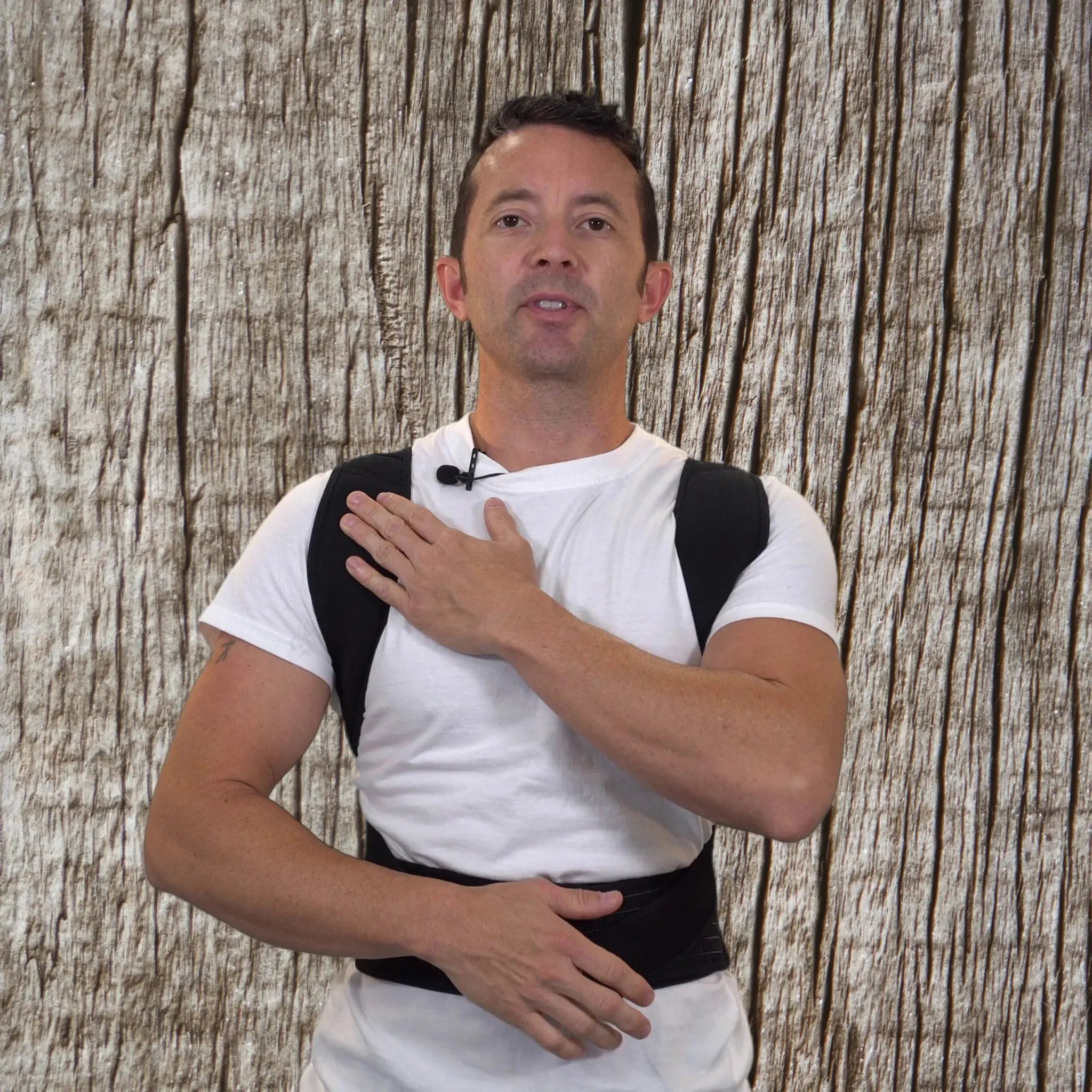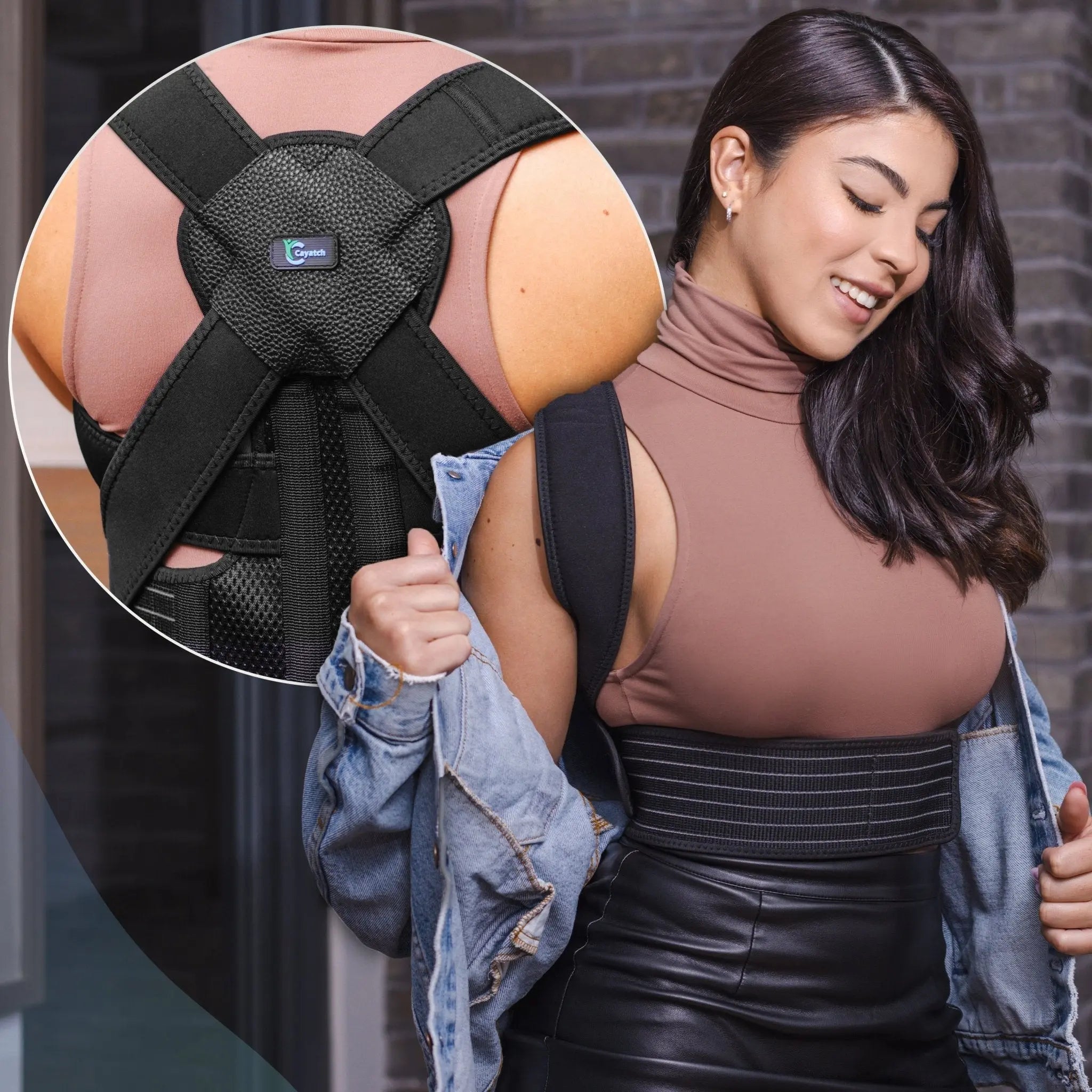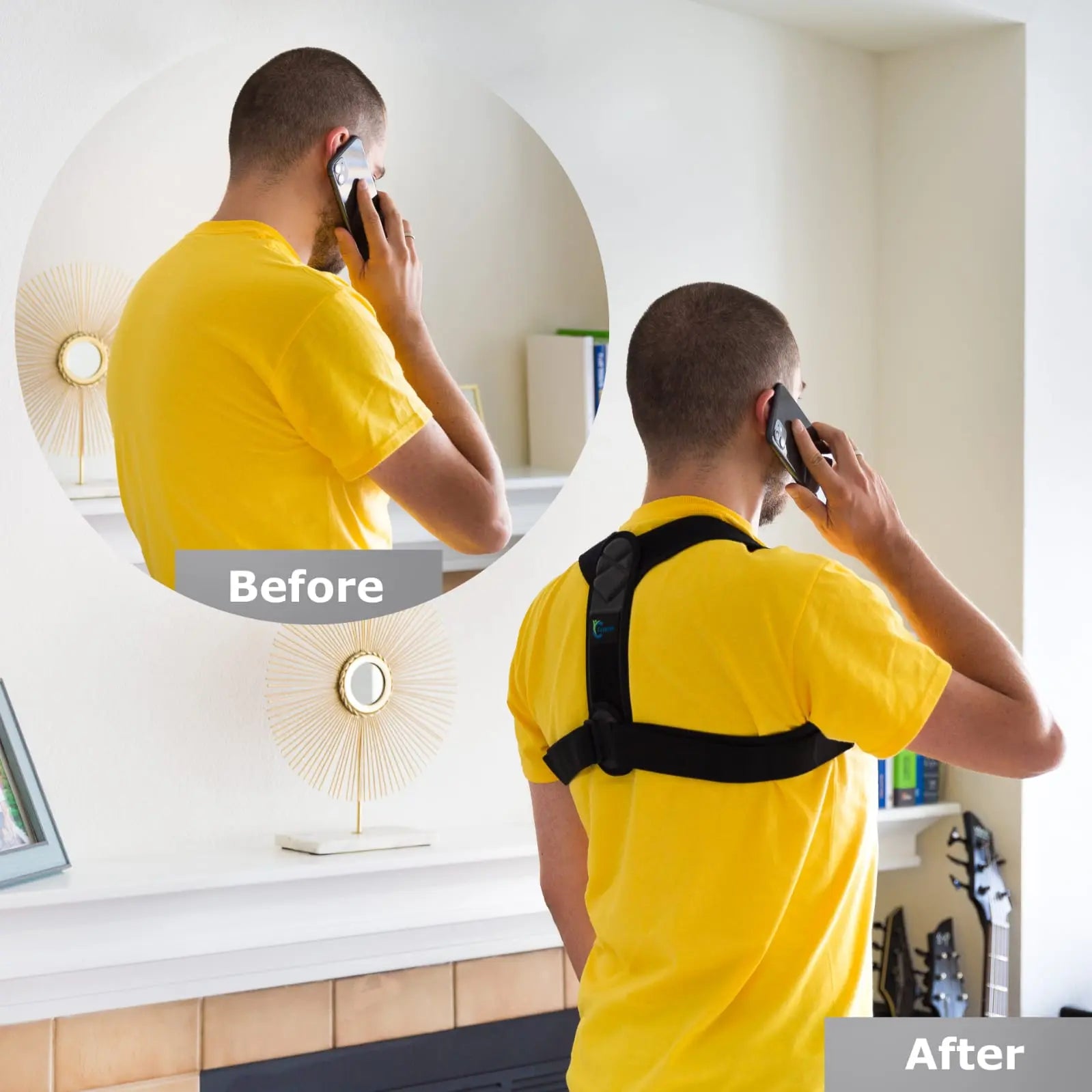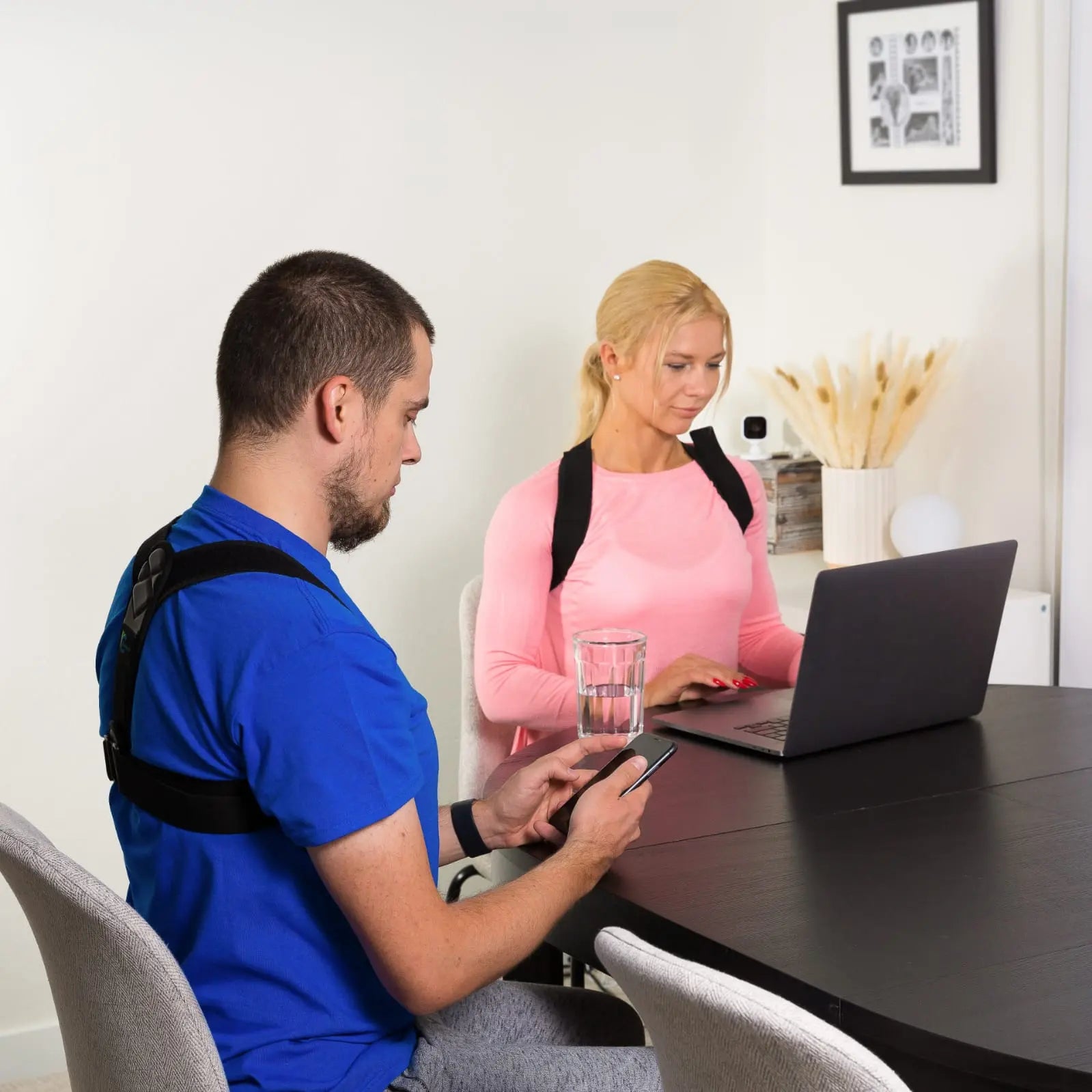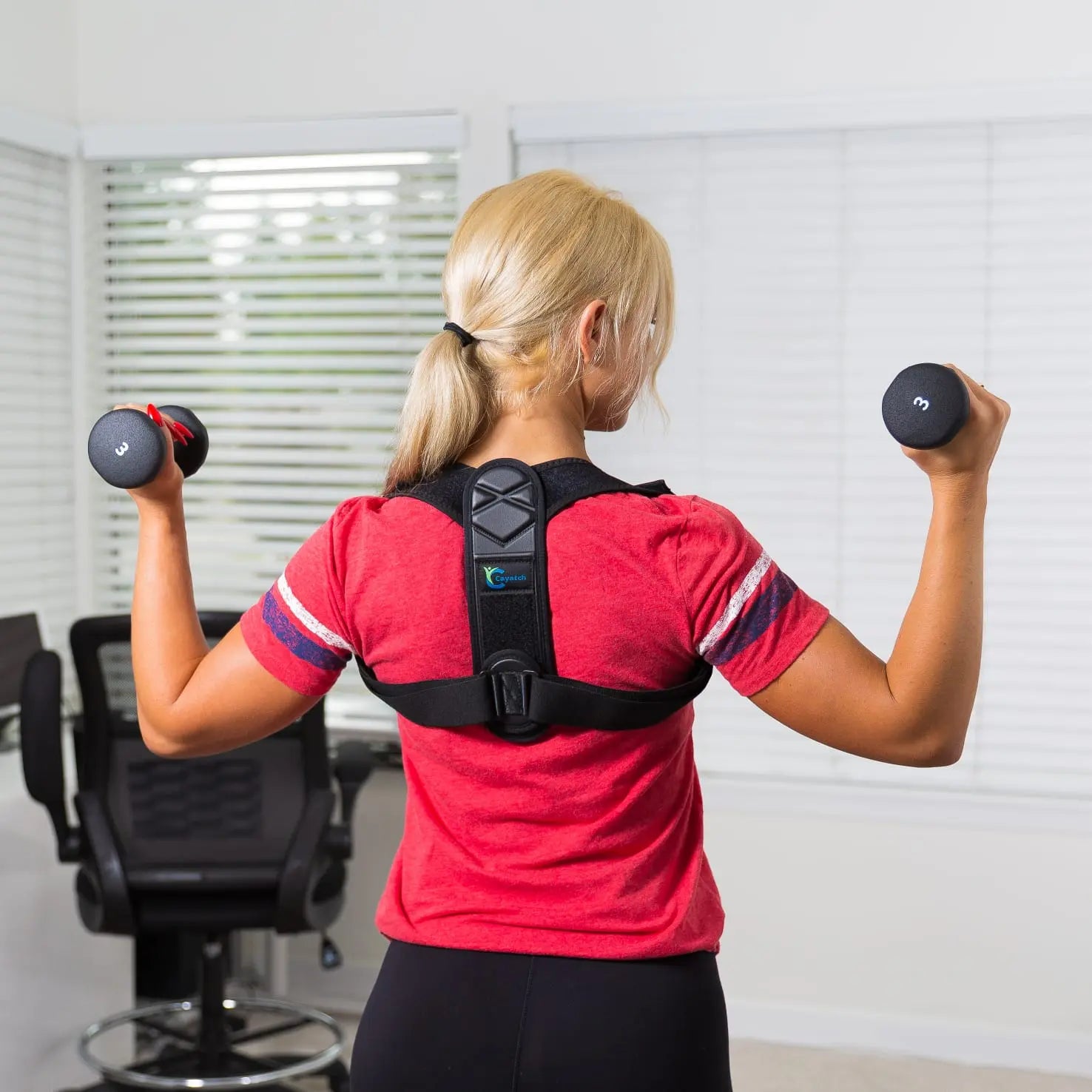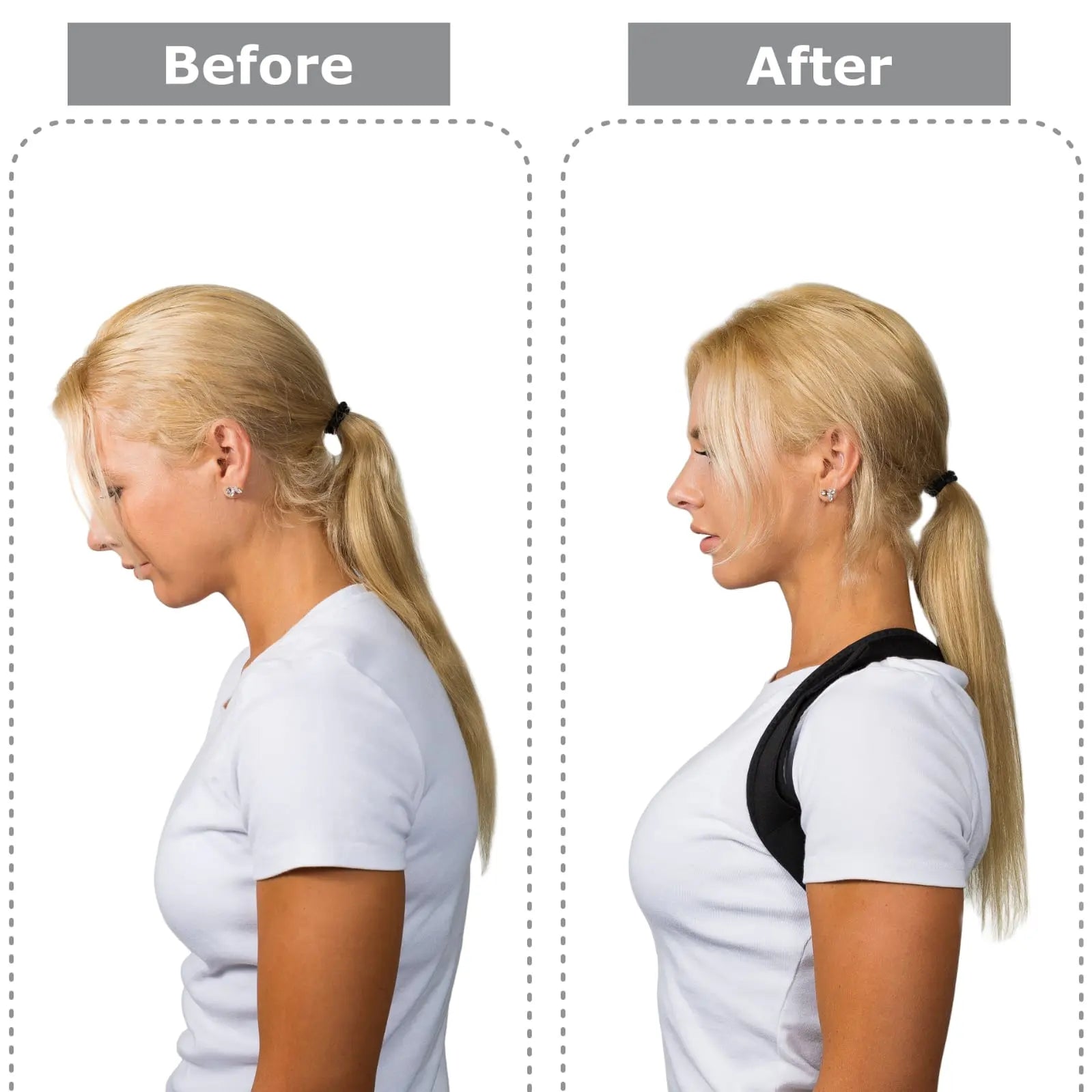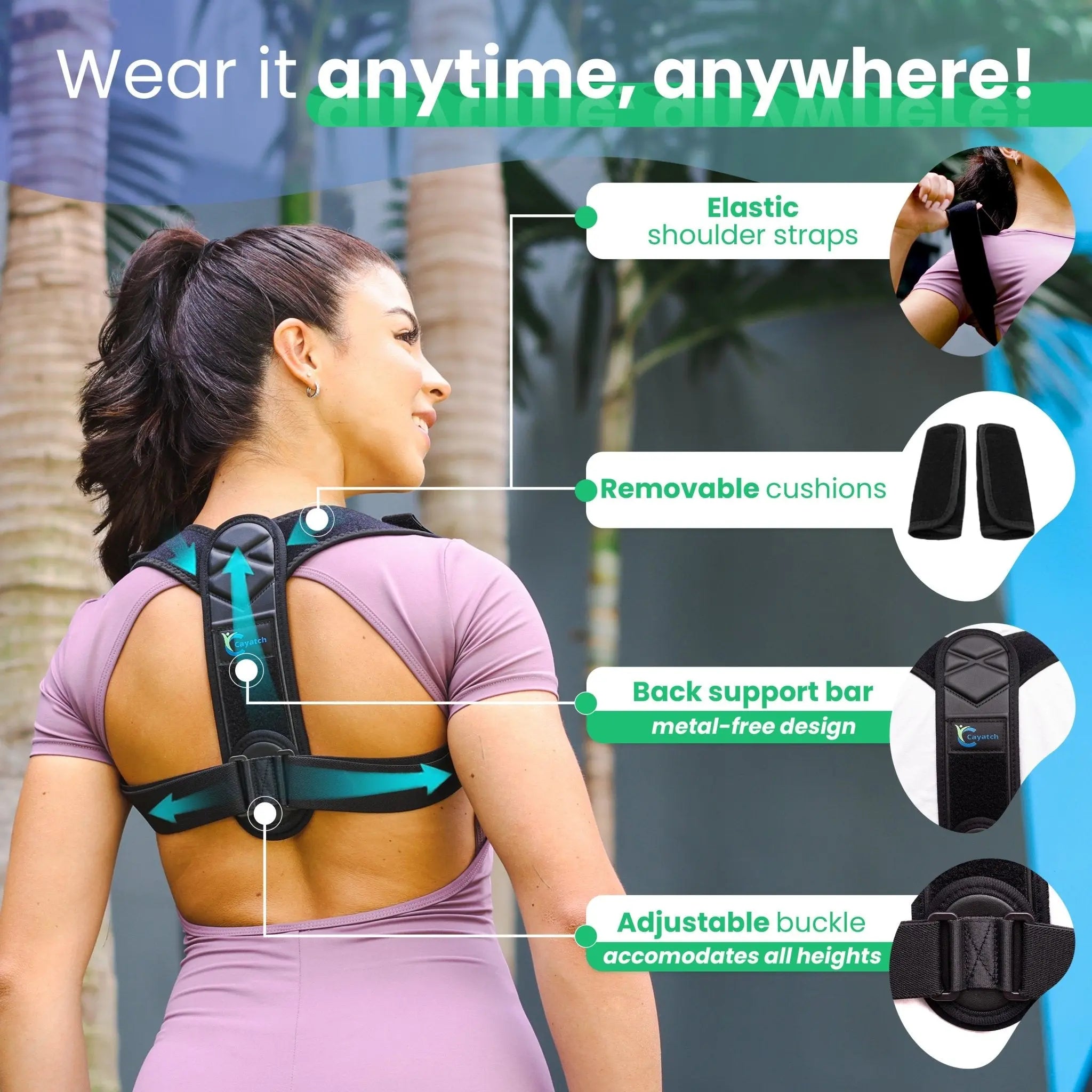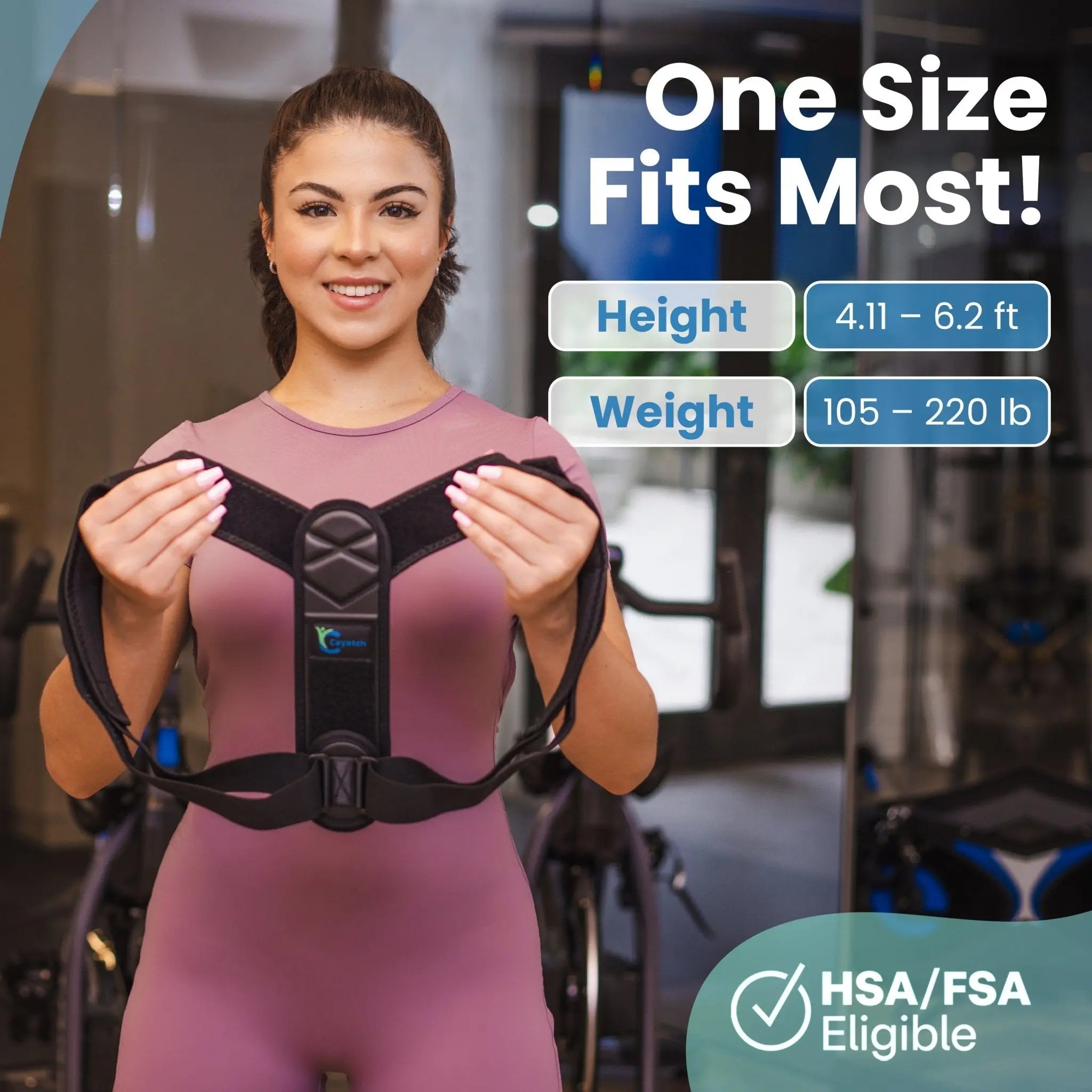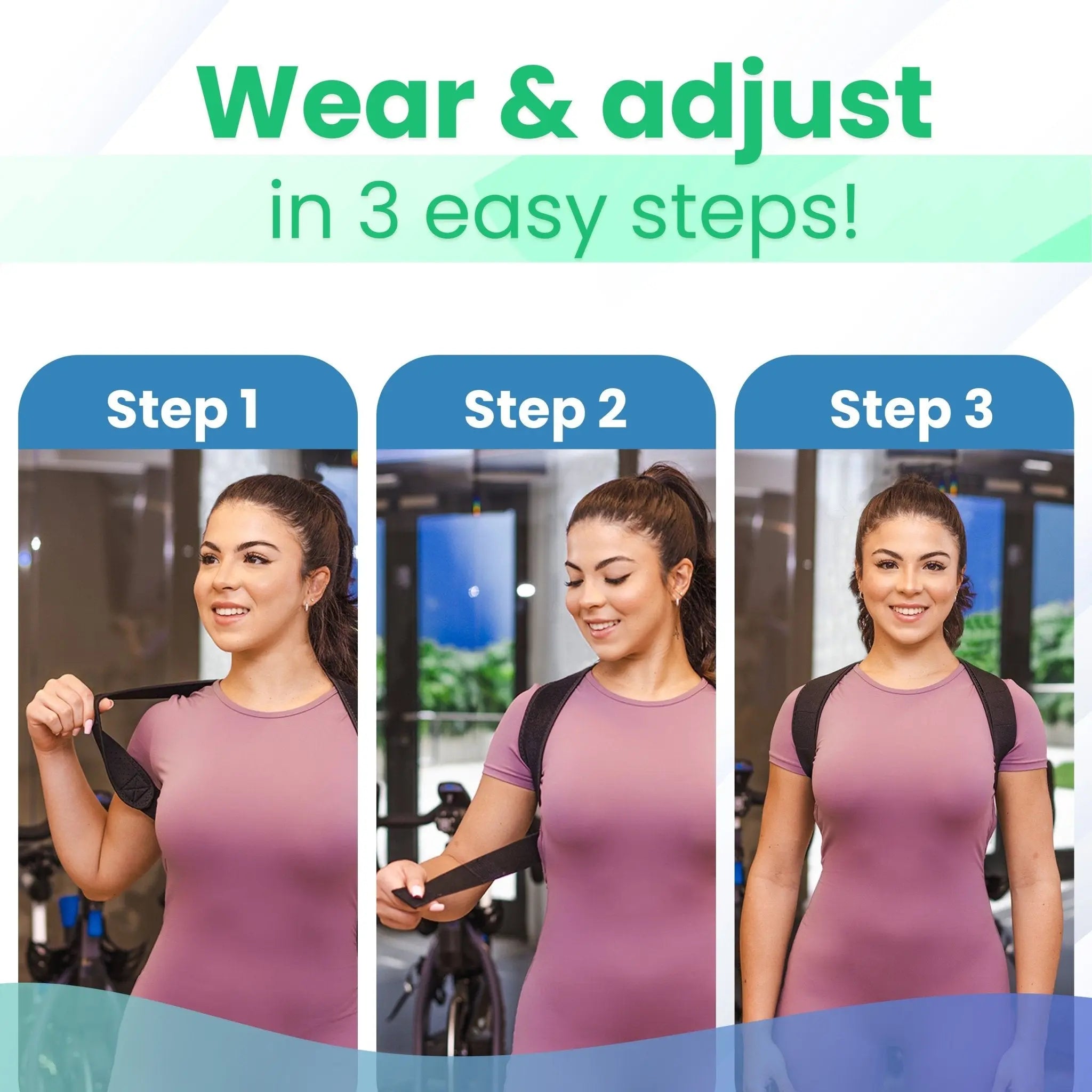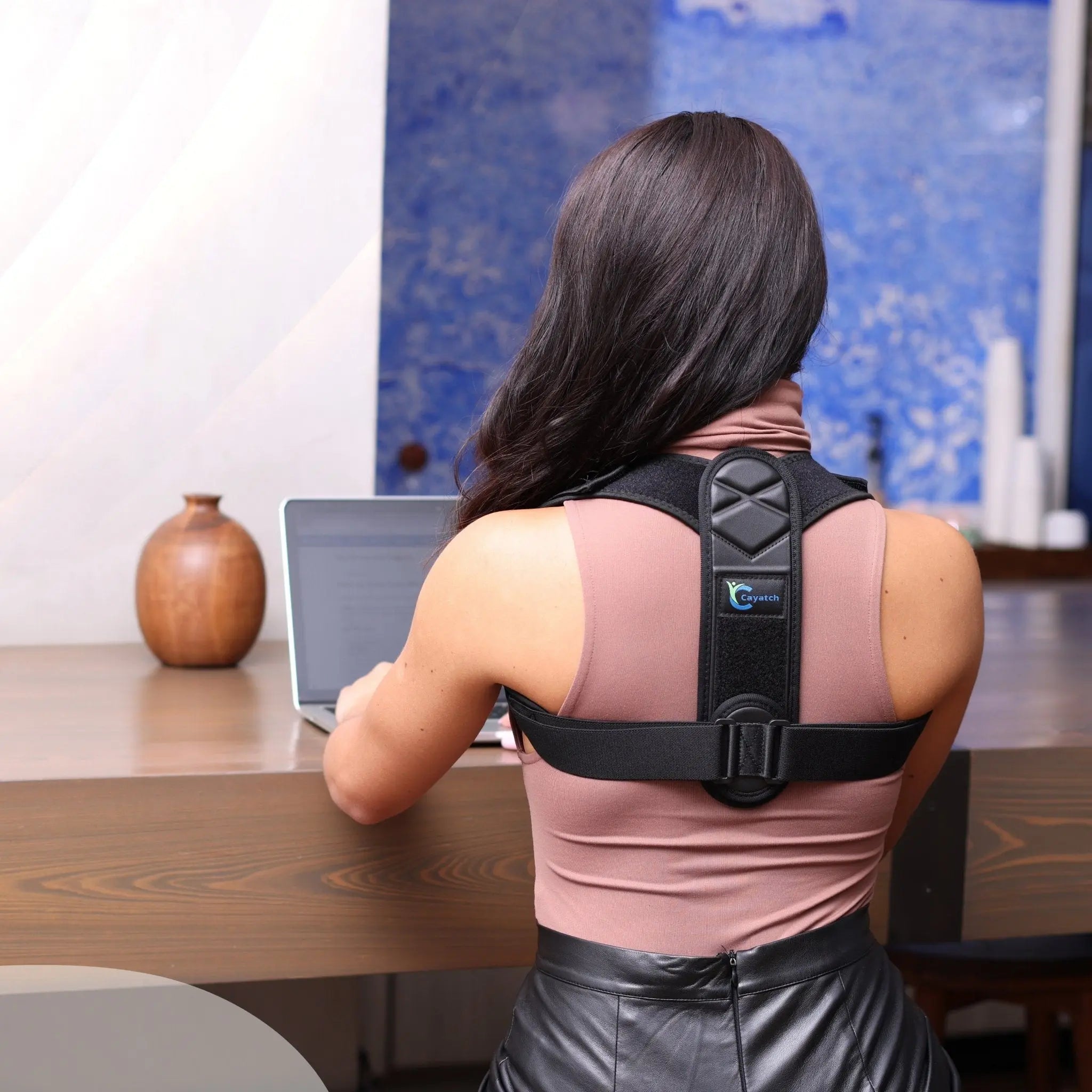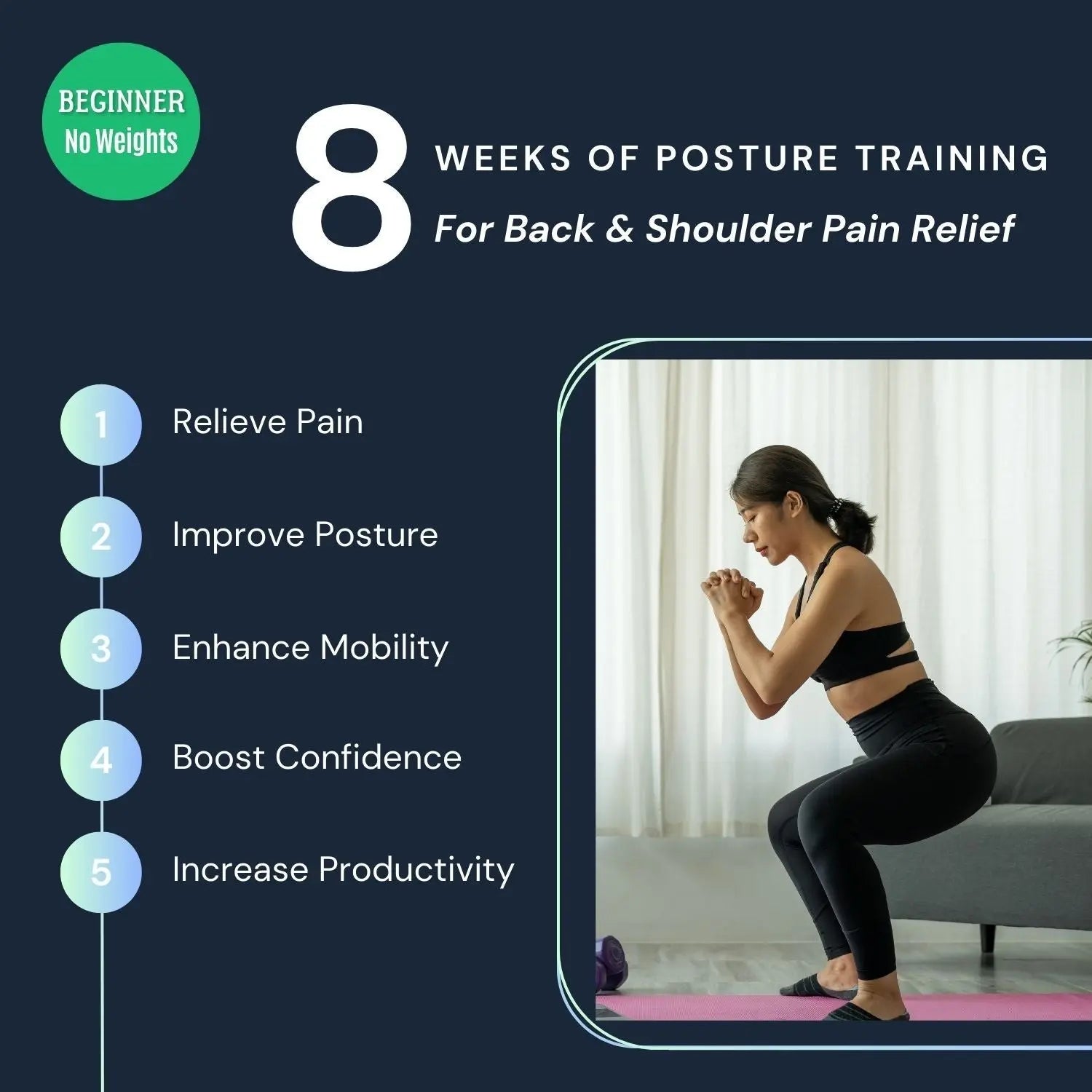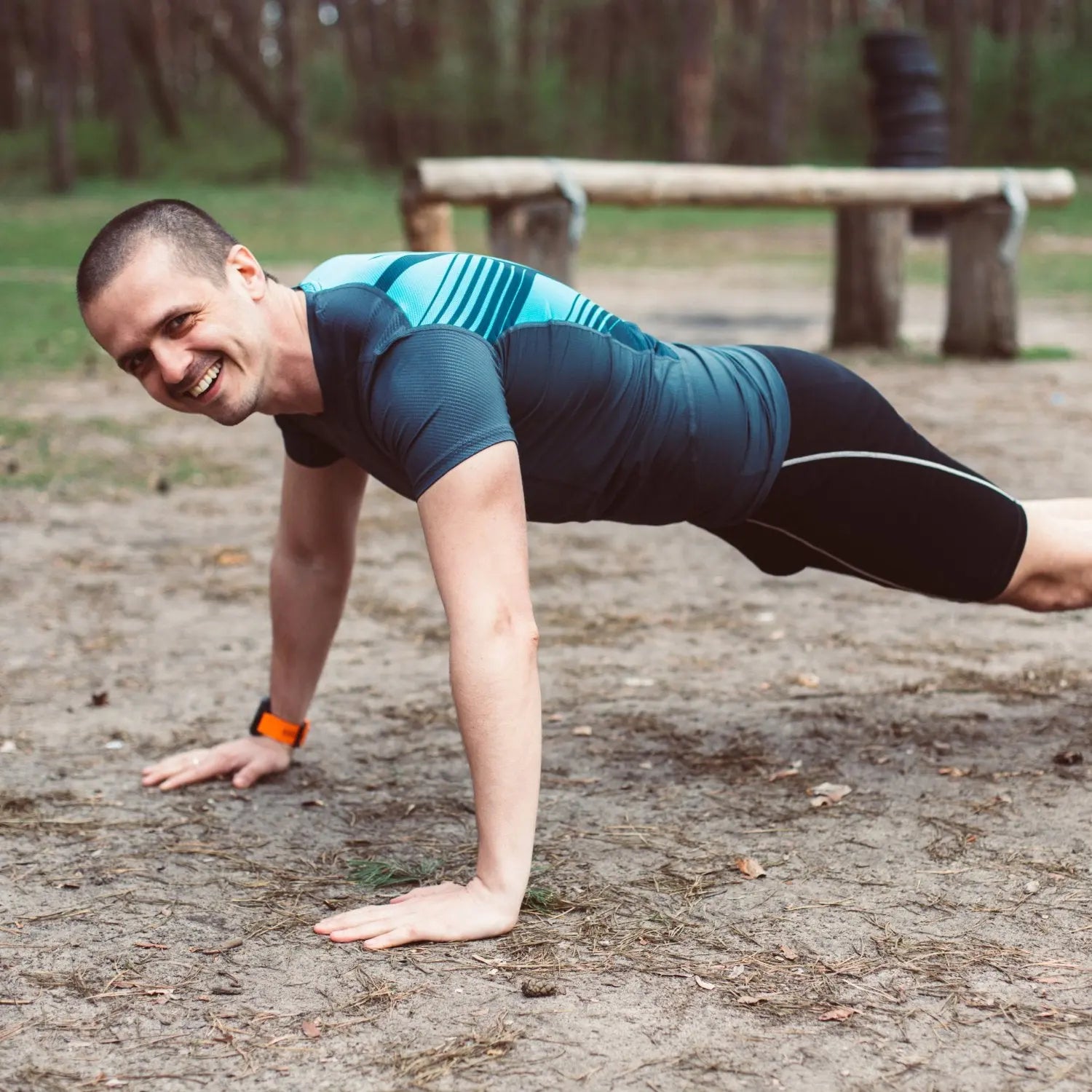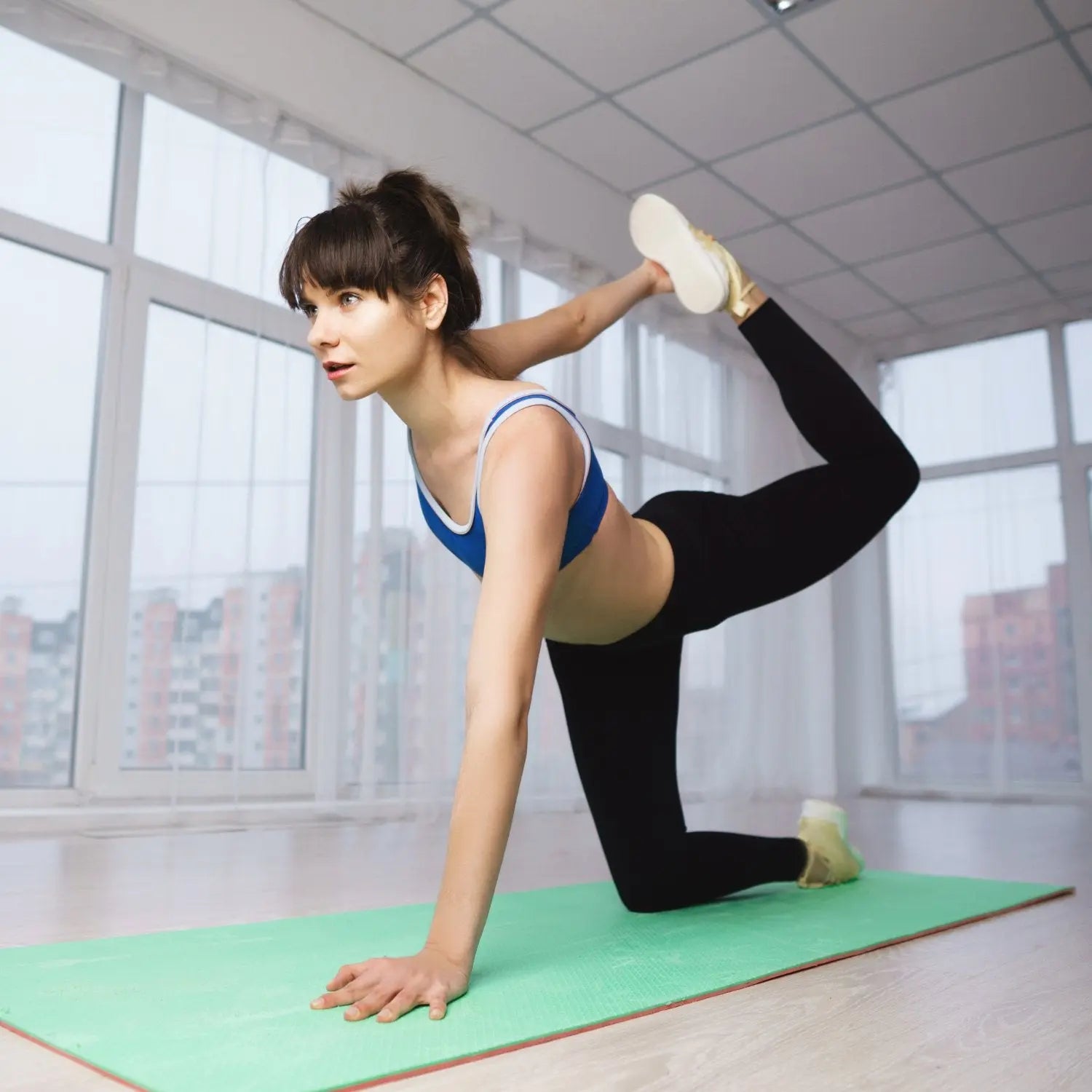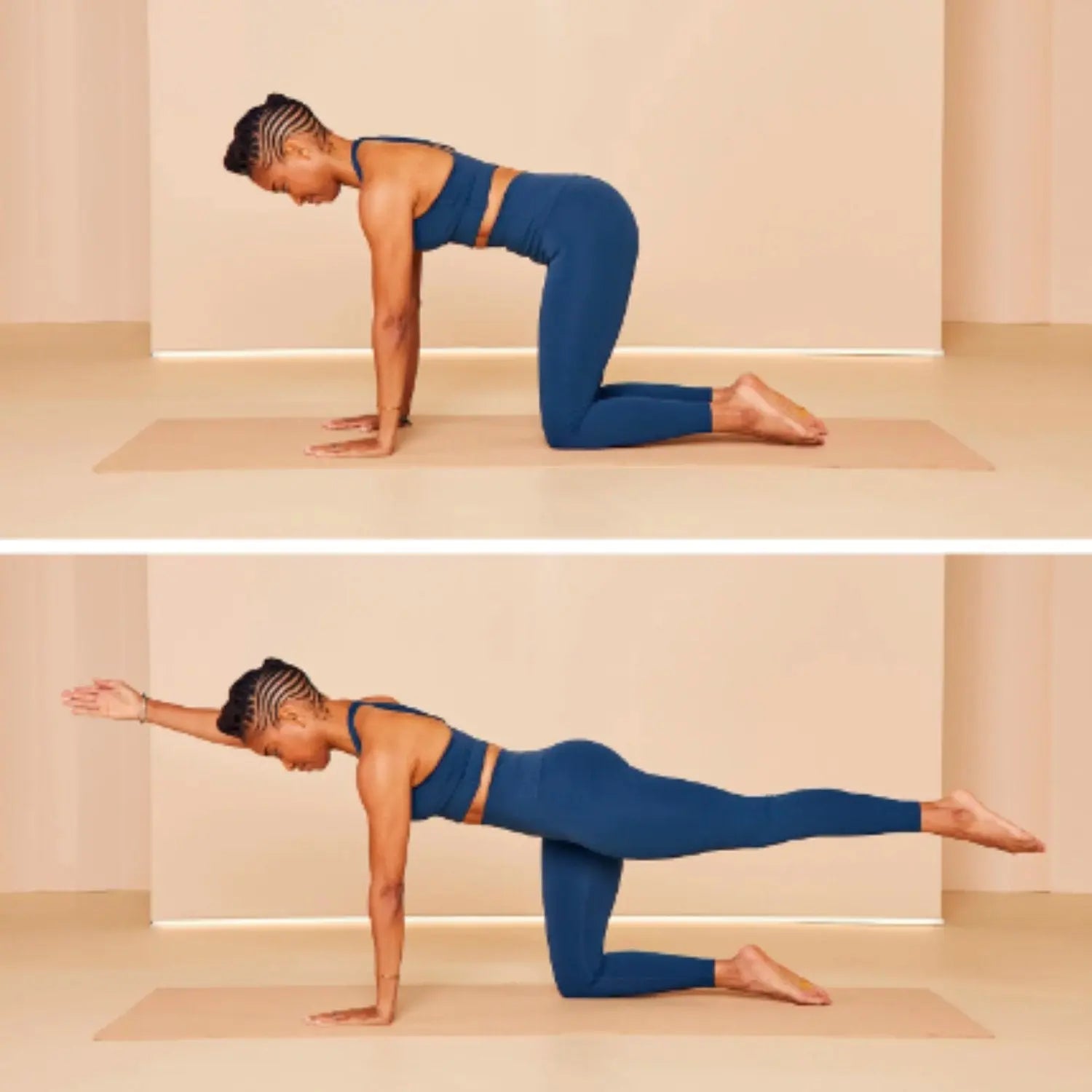8 Exercises To Fix Anterior Pelvic Tilt

Key Takeaways:
1. Understanding Anterior Pelvic Tilt: It’s a common postural issue in today's modern living and working environment where the front of the pelvis tilts forward, causing the spine to curve excessively.
2. Causes: Prolonged sitting, weak glutes and core, and tight hip flexors and lower back muscles are primary causes.
3. Symptoms: Symptoms include lower back pain, poor posture, and an exaggerated lumbar curve.
4. How To Fix Anterior Pelvis Tilt: Effective Exercises to correct this include hip flexor stretches, glute bridges, planks, and abdominal exercises.
5. Mindfulness: Regular practice of these exercises, combined with posture awareness, is crucial for improvement.
6. Q&A's addressed towards the end of the article:
- How long does it take to fix anterior pelvic tilt?
- Is it possible to reverse anterior pelvic tilt?
- What is the fastest way to fix anterior pelvic tilt?
Introduction
Anterior pelvic tilt (APT) is a common condition where the front of the pelvis tilts forward, causing an exaggerated curvature in the lower back. This condition can affect people of all ages and activity levels but is particularly common in those who spend long hours sitting throughout the day.
Anterior pelvic tilt can often lead to lower back discomfort, pain, and mobility issues if left unaddressed.
In this article, we will explore what anterior pelvic tilt is, the causes of anterior pelvic tilt, eight effective exercises to help you fix it, and some additional considerations when trying to correct your anterior pelvic tilt.
What Is Anterior Pelvic Tilt?

Anterior pelvic tilt, also known as "lumbar hyperlordosis" or "swayback," refers to the forward tilting of the pelvis. When the pelvis tilts forward, it disrupts the body's natural alignment, placing undue stress on the lumbar spine.
This misalignment can lead to chronic lower back pain, hip discomfort, and even impact the knees and ankles over time. At the core of anterior pelvic tilt is the imbalance between various muscle groups around the pelvis and lower back. Typically, this condition arises due to tight hip flexors and lower back muscles combined with weak abdominal and gluteal muscles.
Everyone, regardless of age or gender, can be susceptible to developing an anterior pelvic tilt, but it may be more prevalent in particular groups. Prolonged periods of sitting, especially with poor sitting posture, are among the most common contributors to this imbalance. For instance, individuals who spend much of their day at a desk may unknowingly foster conditions that lead to APT.
Anterior pelvic tilt can be an extreme nuisance, fortunately, it can be corrected with a combination of exercises that target the muscles responsible for this imbalance.
What Causes Anterior Pelvic Tilt?
Anterior pelvic tilt can be caused by multiple factors, mostly centered around prolonged poor posture. Here are the six main causes of APT:
1. Prolonged Sitting
Modern lifestyles often involve extended periods of sitting, whether at a desk, in a car, or on the couch. Prolonged sitting can lead to tightening of the hip flexors and weakening of the gluteal muscles.
When these muscles are not regularly stretched or strengthened, they can create an imbalance that causes the pelvis to tilt forward. Over time, this can lead to chronic anterior pelvic tilt, contributing to lower back pain and other postural issues.
2. Weak Abdominal Muscles
The abdominal muscles play a crucial role in maintaining pelvic alignment. Weakness in these muscles can reduce their ability to counteract the pull of the lower back muscles and hip flexors.
When the abdominals are not strong enough to keep the pelvis in a neutral position, the front of the pelvis may tilt downward, leading to an anterior pelvic tilt. Strengthening the core muscles can help in stabilizing the pelvis and reducing anterior tilt.
3. Tight Hip Flexors
Hip flexors, including the iliopsoas and rectus femoris muscles, are located at the front of the hip. When these muscles become tight, they pull the pelvis forward, contributing to anterior pelvic tilt.
Activities that involve repetitive hip flexion, such as cycling or sitting with poor posture, can exacerbate this tightness. Stretching the hip flexors regularly can help in maintaining flexibility and preventing the pelvis from tilting forward.
4. Weak Gluteal Muscles
The gluteal muscles, particularly the gluteus maximus, are essential for stabilizing the pelvis. Weak glutes can lead to a lack of support for the pelvis, allowing it to tilt forward.
Strengthening the gluteal muscles through targeted exercises, such as squats and lunges, can help provide the necessary support to keep the pelvis aligned properly. Strong glutes counteract the pull of the hip flexors and help maintain a neutral pelvic position.
5. Poor Posture
Poor posture, such as slouching, forward head, or excessive lumbar lordosis (inward curve of the lower back), can contribute to anterior pelvic tilt.
When individuals habitually adopt poor postural habits, the muscles adapt to these positions, leading to imbalances that can cause the pelvis to tilt forward.
Practicing good posture, both while sitting and standing, is essential for maintaining proper pelvic alignment and preventing APT.
6. Lack of Physical Activity
A sedentary lifestyle contributes significantly to muscle imbalances that lead to anterior pelvic tilt. Lack of physical activity can result in both tight hip flexors and weak gluteal and abdominal muscles.
Regular exercise is crucial for maintaining muscle balance and overall postural health. Incorporating activities that promote flexibility, strength, and cardiovascular health can help prevent the development of anterior pelvic tilt and improve overall well-being.
What Are Symptoms Of Anterior Pelvic Tilt
Anterior pelvic tilt can cause a variety of symptoms, ranging from mild to debilitating. Here are the six most common symptoms of APT:
1. Lower Back Pain
One of the most common symptoms of anterior pelvic tilt is chronic lower back pain. The exaggerated curvature of the lower spine puts additional stress on the lumbar vertebrae and surrounding muscles. This can lead to discomfort, stiffness, and even more severe pain if left unaddressed.
2. Hip Pain
Anterior pelvic tilt can also cause hip pain due to the unnatural positioning and increased pressure on the hip joints. The forward tilt of the pelvis alters the mechanics of the hip joint, leading to discomfort and potential strain on the hip flexors. This pain can be exacerbated by activities that involve repetitive hip movements, such as running or cycling.
3. Tight Hamstrings
Inflammation in the two sacroiliac joints present in the lower back of our body causes pain, which can spread to the buttocks, thighs, and upper back.
4. Poor Posture
Anterior pelvic tilt often results in visible postural changes. Individuals may exhibit an exaggerated arch in the lower back, with the abdomen protruding forward and the buttocks sticking out. This poor posture can lead to a cascade of other musculoskeletal issues, even causing ankle and knee pain.
5. Reduced Range of Motion
People with anterior pelvic tilt may experience a reduced range of motion in the hips and lower back. The tightness in the hip flexors and hamstrings, along with the increased curvature in the lower spine, can limit flexibility and movement. This restriction can impact daily activities and reduce overall mobility, making it important to address and correct the tilt.
6. Weak Core and Glute Muscles
A weak core and glute muscles are both a cause and a symptom of anterior pelvic tilt. The imbalance created by these weakened muscles can lead to further tilting of the pelvis, perpetuating the cycle of poor alignment and discomfort.
Exercises To Fix Anterior Pelvic Tilt?
Correcting anterior pelvic tilt involves a combination of exercises, stretches, and postural adjustments. Here are eight exercises that you can do to improve APT.
Exercise 1: Hip Flexor Stretch

The hip flexor stretch can alleviate anterior pelvic tilt, encourage better posture, and reduce strain in the hip flexor muscles.
Instructions:
- Position yourself in a kneeling position, with one foot in front of the other and your knees at a right angle to each other.
- Keep your back straight and push your hips forward slightly.
- You should feel a stretch in the front of your hips.
- Hold for 20-30 seconds on one side, then switch.
Exercise 2: Glute Bridge
The glute bridge helps correct anterior pelvic tilt by strengthening the gluteal muscles and correcting the lower back.
Instructions:
- Lie on your back on the floor with your feet hip-width apart.
- Keep your knees bent.
- Squeeze your abdominal muscles and engage them throughout the exercise.
- Slowly lift your hips off the floor to form a straight line with your upper body and thighs.
- Hold this position for 10 seconds.
- Slowly lower the body and relax.
Exercise 3: Dead Bug
Strengthening and stabilizing the core via exercises like the Dead Bug can reverse anterior pelvic tilt and yield visible results within a short period.
Instructions:
- Begin in an upright standing position with your feet shoulder-width apart.
- Keep your core muscles tight, then hinge at your hips.
- Bend your knees to about a 90-degree angle.
- Return to the original position.
- Repeat a few times.
Exercise 4: Plank

The plank is an ideal exercise for building strength in the abdominals and lower back, helping to maintain the pelvis in its natural position.
Instructions:
- Lie face down on an exercise mat.
- Place your hands on the mat directly under your shoulders.
- Slowly lift your upper body and thighs off the ground, moving into a push-up position.
- Engage your core muscles and hold this position for 30 to 60 seconds, keeping your body straight.
- Gently lower your body and relax.
- Repeat 15-20 times.
Exercise 5: Bird Dog
The bird dog exercise strengthens the abdominal and back muscles, improving stability.
Instructions:
- Begin on all fours on the ground with your knees under your hips.
- Tighten your core muscles and raise your left arm, reaching it forward until it aligns with your torso.
- Extend your right leg backward until it aligns with your torso.
- Hold this position for 10 seconds and return to the starting pose.
- Repeat the steps with alternate arms and legs.
Exercise 6: Standing Hip Abduction
Hip abduction in a standing position strengthens the hip abductors, aiding in pelvic strength and promoting better posture.
Instructions:
- Stand tall with feet hip-width apart.
- Lift one leg out to the side.
- Keep your leg straight, then lower it back down.
- Perform 10-12 repetitions on each side.
Exercise 7: Wall Sit
The wall sit targets the quadriceps and glutes, improving stability in the lower body and helping to correct pelvic tilt.
Instructions:
- Squat down into a wall-hugging stance, with feet hip-width apart.
- Bend your knees to a 90-degree angle and slide down the wall.
- Try to maintain this posture for at least 30 seconds.
Exercise 8: Pelvic Tilt Correction
By increasing self-awareness and empowering you to take charge of your pelvic alignment, this exercise focuses on correcting anterior pelvic tilt.
Instructions:
- Lie on your back with your feet flat on the floor and your knees bent.
- Place your hands where your hip bones would be.
- Flatten your lower back on the floor by tilting your pelvis forward.
- Hold for a few seconds, then release.
- Complete two to three sets of ten to twelve reps each.
How To Help Correct Anterior Pelvic Tilt While Sleeping?

Interestingly, you can improve your anterior pelvic tilt while sleeping. Here are three considerations to help correct your anterior pelvic tilt while sleeping:
1. Choose the Right Sleeping Position
- Sleeping on your back can help maintain a neutral spine. Place a pillow under your knees to reduce pressure on your lower back and promote proper alignment of the pelvis.
- If you prefer sleeping on your side, place a pillow between your knees to keep your hips aligned. Ensure that your top leg does not pull your pelvis forward, which can exacerbate APT.
- Avoid sleeping on your stomach as this position can increase the arch in your lower back, worsening anterior pelvic tilt. If you must sleep on your stomach, place a pillow under your hips to help keep your spine more neutral.
- If you sleep on your back, consider placing a small, rolled towel or a lumbar pillow under your lower back to maintain the natural curve of your spine.
- Placing a pillow under your knees (when sleeping on your back) or between your knees (when sleeping on your side) can help keep your pelvis in a neutral position.
- A mattress that is too soft can allow your body to sink in, which can worsen pelvic tilt. A medium-firm mattress provides better support for your spine and helps maintain proper alignment.
- Ensure your mattress provides even support across your body, especially in the lower back area.
Read: How To Improve Posture While Sleeping?
How To Help Correct Anterior Pelvic Tilt While Walking?
Additionally, making conscious adjustments to your walking posture and incorporating specific techniques to strengthen and stretch the appropriate muscles can significantly help with your anterior pelvic tilt. Here are some strategies to help fix APT while walking:
1. Engage Your CoreFocus on engaging your abdominal muscles while walking. Imagine pulling your belly button towards your spine to activate your core and stabilize your pelvis.
2. Activate Your GlutesConsciously squeeze your glutes with each step to help maintain proper pelvic alignment and reduce the forward tilt.
3. Maintain a Neutral Pelvis
Aim to keep your pelvis in a neutral position while walking. Avoid excessively arching your lower back or tilting your pelvis forward.
4. Improve Your Posture
Stand tall with your shoulders back and down, chest open, and head aligned with your spine. Be mindful with improving your posture. Good posture helps distribute weight evenly and reduces strain on the lower back.
6. Take Shorter Strides
Shorter strides can help you maintain better control over your pelvic position and reduce the likelihood of tilting forward.
5. Wear Supportive Footwear
Choose shoes that provide good arch support and cushioning. Poor footwear can contribute to improper gait mechanics and exacerbate APT.
6. Stretch Hip Flexors and Lower Back Muscles
Regularly stretch your hip flexors and lower back muscles to reduce tightness that contributes to anterior pelvic tilt.
7. Strengthen Hamstrings and Abdominal Muscles
Strengthen your hamstrings and abdominal muscles to support proper pelvic alignment through exercises described above.
Read: Walking Posture – Why Is It Important?
Frequently Asked Questions (FAQs)
How long does it take to fix anterior pelvic tilt?
Fixing anterior pelvic tilt can take anywhere from a few weeks to a few months. The duration depends on the consistency and frequency of corrective exercises and individual characteristics. Consistently performing the exercises mentioned above in a safe and effective manner can expedite the amount of time it takes to fix anterior pelvic tilt.
Is it possible to reverse anterior pelvic tilt?
Yes, anterior pelvic tilt can be reversed through corrective exercises, posture awareness, and lifestyle modifications, like the ones mentioned above.
What is the fastest way to fix anterior pelvic tilt?
Fixing anterior pelvic tilt as quickly as possible requires consistent exercises, proper sleep and posture, and the guidance of a physical therapist.
Conclusion
Addressing anterior pelvic tilt is essential for improving overall posture, reducing discomfort, and enhancing mobility. By understanding the causes and symptoms of this condition, anyone can take proactive steps to correct this postural misalignment.
The exercises outlined in this guide, such as hip flexor stretches, glute bridges, and core strengthening routines, are designed to target the specific muscles, when strengthened, improve anterior pelvic tilt. Consistent incorporation of these exercises, combined with mindful posture adjustments throughout the day, can lead to significant improvements over time.
Patience and persistence are key, as it may take several weeks to months to see noticeable changes. Seeking guidance from a physical therapist can also provide personalized advice and ensure that exercises are performed correctly.
By integrating these strategies into daily routines and maintaining a balanced approach to physical activity, individuals can effectively manage and reverse anterior pelvic tilt, leading to better posture and a higher quality of life.
Read: How To Fix Posterior Pelvic Tilt? 9 Workouts To Your Rescue



























